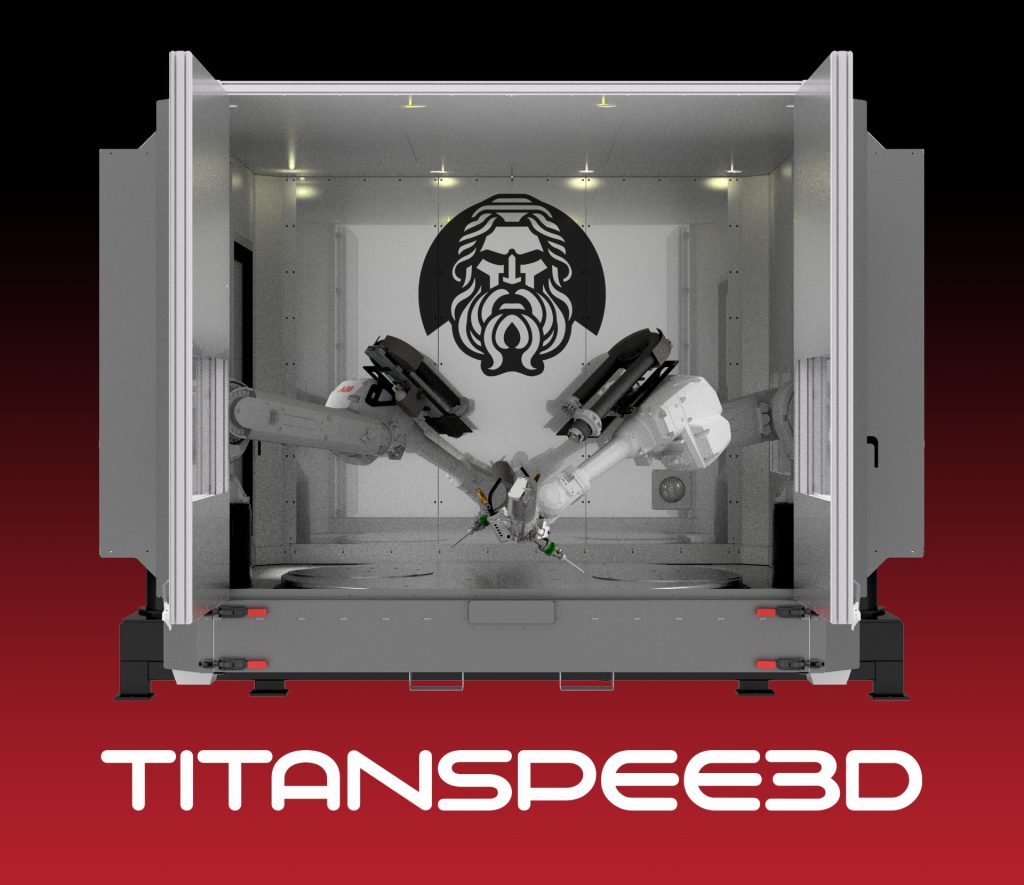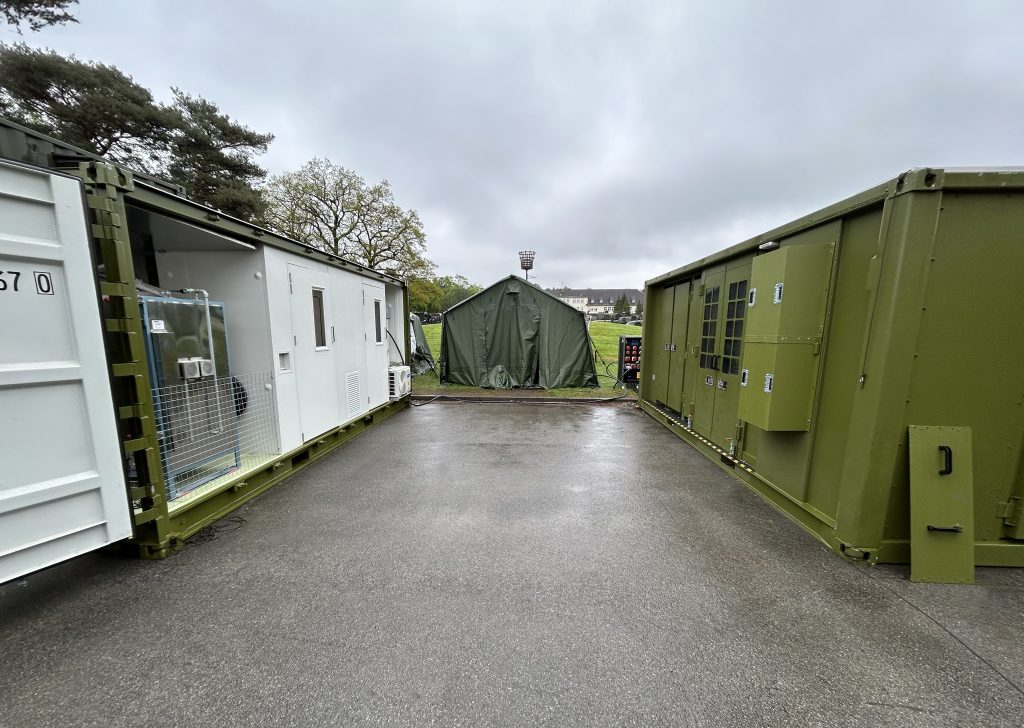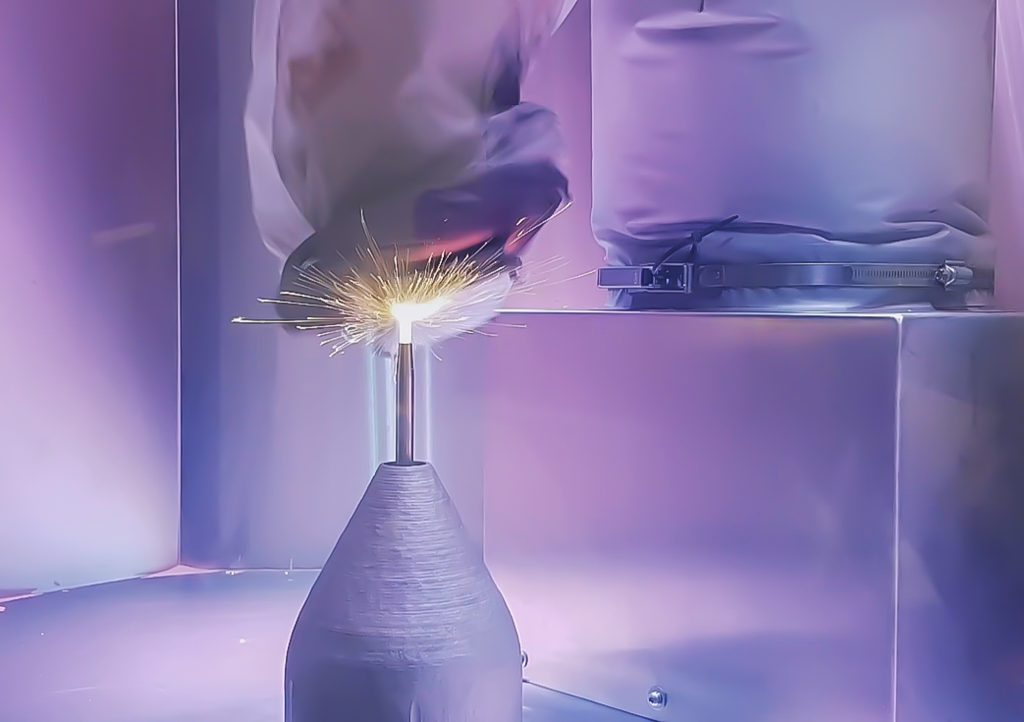Australian metal 3D printer manufacturer SPEE3D has announced the launch of its newest cold spray 3D printer, the TitanSPEE3D.
Set to be introduced this week at the Large Scale Additive Action Team (LSAAT) meeting in Worcester, Massachusetts, the new system boasts a substantial build volume and design freedom. The new 3D printer can reportedly fabricate large metal parts that typically require casting, cutting production times from months to days.
Paul Maloney, SPEE3D’s Chief Revenue Officer (CRO), calls the new TitanSPEE3D a “game changer” for industries that rely on casting to produce large metal parts. He claims the new system unlocks the ability to 3D print “quickly, sustainably, and at a competitive cost.”
TitanSPEE3D will be available to a limited number of beta customers in 2024, with the commercial release expected next year.

TitanSPEE3D adds to SPEE3D’s growing cold spray portfolio
TitanSPEE3D will add to SPEE3D’s growing portfolio of cold spray 3D printers optimized for the defense and heavy industry sectors.
Last month, the company launched its Expeditionary Manufacturing Unit (EMU) for on-site military applications. This deployable, containerized metal 3D printing solution combines the company’s XSPEE3D cold spray 3D printer with the SPEE3Dcell post-processing unit. Designed to be deployable to remote locations, the EMU is ideal for military forces wanting to rapidly produce metal spare parts where they are needed.
In an interview with 3D Printing Industry Calum Stewart, SPEE3D’s Director of Defense Programs, highlighted the EMU’s ability to overcome supply challenges by getting “more equipment back in the fight more of the time.”
This followed the news last year that SPEE3D had supplied seven WarpSPEE3D 3D printers to Ukraine to support its ongoing war efforts. Part of the US Department of Defence’s (DoD) Ukraine Security Assistance initiative, the 3D printers have now been deployed near the front lines to rapidly produce critical replacement “parts of consequence.”

The company’s new TitanSPEE3D system aims to address the increasing demand for the rapid and affordable production of large metal parts.
The 3D printer will offer a sizable build volume, combining a 2.4 m diameter with a height of 1 m. TitanSPEE3D users will be able to fabricate parts weighing up to 2000 kg from a range of metals, including 6061 Aluminium, Aluminium Bronze, and 316 Stainless Steel.
Casting-equivalent metal parts can be produced in days thanks to SPEE3D’s Cold Spray Additive Manufacturing (CSAM) Technology. Therefore, the new TitanSPEE3D suits defense and heavy industry applications, often demanding large-scale components at short notice.
CSAM jets metal powder at supersonic speeds onto a substrate. The force of the kinetic energy causes the particles to bind together, quickly creating large parts with low porosity and predictable material properties.
Unlike other metal 3D printers, CSAM does not require fragile lasers or harmful gasses. This makes SPEE3D’s systems easy to transport and install at the point of need.
“SPEE3D revolutionized large-scale metal 3D printing when we launched our first printer utilizing our unique Cold Spray Additive Manufacturing (CSAM) technology,” stated Maloney. He added that the company has continued to elevate its success through the continued expansion of its 3D printing technologies.

New large-format metal 3D printers hit the market
The industrial metal 3D printer market is witnessing modest growth, with SPEE3D one of several companies to launch new large-scale systems to market. In Q4 2023, market intelligence firm CONTEXT noted that, despite an overall decline in the Industrial 3D printer space, shipments of Industrial metal 3D printers increased by 4% YoY.
Last month, Chinese 3D printer manufacturer Eplus3D launched the EP-M2050. This large-format Laser Beam Powder Bed Fusion (PBF-LB) 3D printer features 36 lasers as standard, with the option to upgrade the system to 49 or 64 lasers. The model offers a substantial build volume of 2050 x 2050 x 1100 mm. The Z-axis can be extended to 2000 mm.
The launch represented a notable development in the ongoing metal 3D printer ‘laser wars.’ This has seen many manufacturers focus on marketing more expensive large-scale models, often characterized by increasing numbers of lasers.
2023 saw Eplus3D release the EP-M1550 which can be extended to include 25 lasers. Similarly, the likes of Xi’an Bright Laser Technologies, Farsoon Technologies, Nikon SLM Solutions and Velo3D all offer multi-laser systems.
Elsewhere, Metal 3D printer developer Meltio and Michigan-based industrial automation firm Accufacture recently introduced the Alchemist 1. This robotic DED 3D printing workcell is targeted to the US market and is powered by Meltio’s laser metal deposition (LMD) 3D printing technology. Optimized for the production of large-scale, fully dense parts, the 3D printer is designed for easy integration into existing automotive, aerospace, mining, oil and gas workflows.
Want to help select the winners of the 2024 3D Printing Industry Awards? Join the Expert Committee today.
What does the future of 3D printing hold?
What near-term 3D printing trends have been highlighted by industry experts?
Subscribe to the 3D Printing Industry newsletter to keep up to date with the latest 3D printing news.
You can also follow us on Twitter, like our Facebook page, and subscribe to the 3D Printing Industry Youtube channel to access more exclusive content.
Featured image shows SPEE3D’s new TitanSPEE3D cold spray 3D printer. Image via SPEE3D.


